PDFs these days contain sensitive data and must be protected to avoid data leaks. Password-protecting PDF is the most suitable choice as this helps to give access control to authorized users only. Adobe Acrobat offers this service, but many users avoid using it due to its expensive cost and limited accessibility.
For this purpose, we will discuss the methods to password-protect PDFs without Acrobat in this article. Also, keep a check on the comparison table to learn about why the alternative tool stands out.
Part 1. Which is The Best Tool to Password-Protect PDF Without Acrobat?
If you have been thinking about how to password-protect a PDF file without Acrobat, UPDF is the best PDF editor to use. UPDF stands out among numerous PDF editors. Head to the table with a detailed comparison:
| Comparison | Features | UPDF | Foxit | PDF Expert |
| Edit PDF | Add/edit text | |||
| Add/delete/extract/rotate/crop images | ||||
| Add clickable links | ||||
| Add watermarks and backgrounds | ||||
| Add rich text by dragging and dropping | ||||
| Annotate PDF | Highlight/strikethrough/underline | |||
| Text comment/sticky note | ||||
| Shapes/pencils/stamps/signatures | ||||
| Squiggly line | ||||
| Text callout/text box | ||||
| Attach file | ||||
| Stickers | ||||
| AI Assistant | Summarize PDF | |||
| Generate a new file for the translated version | ||||
| Explain PDF | ||||
| Convert PDF to mind map | ||||
| Chat with images | ||||
| Chat beyond PDF | ||||
| OCR | Turn Scanned PDFs into Editable PDFs | |||
| Protect | Open password | |||
| Permission password | ||||
| Redact PDF | ||||
| Compress | Shrink PDF size | |||
| PDF Forms | Create/Fill/Edit PDF forms | |||
| Sign PDF | Electronic signature | |||
| Digital Signature | ||||
| Convert | Word | |||
| PPT | ||||
| Excel | ||||
| Image | ||||
| HTML | ||||
| PDF/A | ||||
| RFT | ||||
| XML | ||||
| CSV | ||||
| TXT | ||||
| Organize Pages | Insert, replace, rotate, delete pages | |||
| Rotate | ||||
| Extract | ||||
| Delete | ||||
| Crop | ||||
| Split | ||||
| Replace | ||||
| Compare | Compare PDFs to detect changes | |||
| Other Features | Create PDF | |||
| Print PDF | ||||
| Merge PDF | ||||
| Pricing | Pricing Plans | - UPDF Pro: $39.99/year or 69.99/perpetual; - UPDF AI Assistant: $79/year or $29/quarter | - PDF Editor: $129.99/year; - PDF Editor+: $159.99/year | - Yearly: $79.99/year; - Lifetime: $139.99/perpetual |
| Compatibility | Compatible OS | Windows, Mac, iOS, Android, and web (UPDF AI only) | Windows, Mac, iOS, and Android | Windows, Mac, iOS, Android, and web |
Based on the results above, the UPDF PDF editor is the best tool to help users password-protect a PDF. UPDF offers all the advanced features when compared to Foxit and PDF Expert but at a much lower price. Even the perpetual lifetime access fee of UPDF is more cost-effective.
Plus, UPDF has a built-in AI feature that helps users deal with PDFs more effectively. This tool even offers 20GB cloud storage featuring UPDF Cloud to help users track changes promptly. So, to use all these advanced features, download UPDF now via the official site and purchase the premium plans at very budget-friendly rates.
Windows • macOS • iOS • Android 100% secure
Part 2. How to Password Protect a PDF File Without Acrobat (Open Password)
To protect your PDFs with an open password and that too without using Acrobat, the UPDF PDF editor is the best to use here. This tool offers the best open password option with a high-end encryption level. An open password is helpful when you do not want someone to view the contents of your PDF document.
Moreover, while applying the open password in UPDF, you can set its encryption level to 128-bit RC4, 128-bit AES, and 256-bit AES. Now, to password-protect PDF without Acrobat, learn the guided steps:
Step 1: Open the PDF and Click on “Protect Using Password."
Explore the UPDF PDF editor after downloading and installing it on your device via the below button. Once you launch it, hit the "Open File" option and import the required PDF to apply the password to it. Now, in the right-side panel, click on the "Protect Using Password" button to open the "Encrypt with Password" menu on the right side.
Windows • macOS • iOS • Android 100% secure
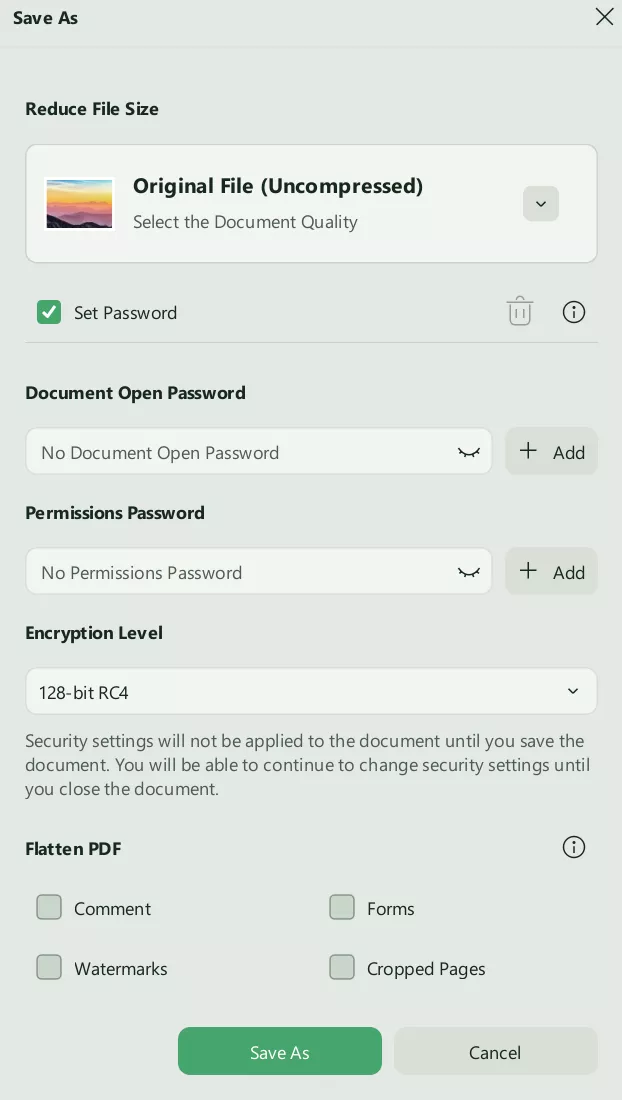
Step 2: Update the Password Settings Per Your Needs
On accessing the "Document Open" tab, first, type your password and confirm it on the next tab. Moreover, tap on "More Options" to set the "Encryption Level" from three different options. Afterward, hit the "Save as" button and save your document to set an open password.
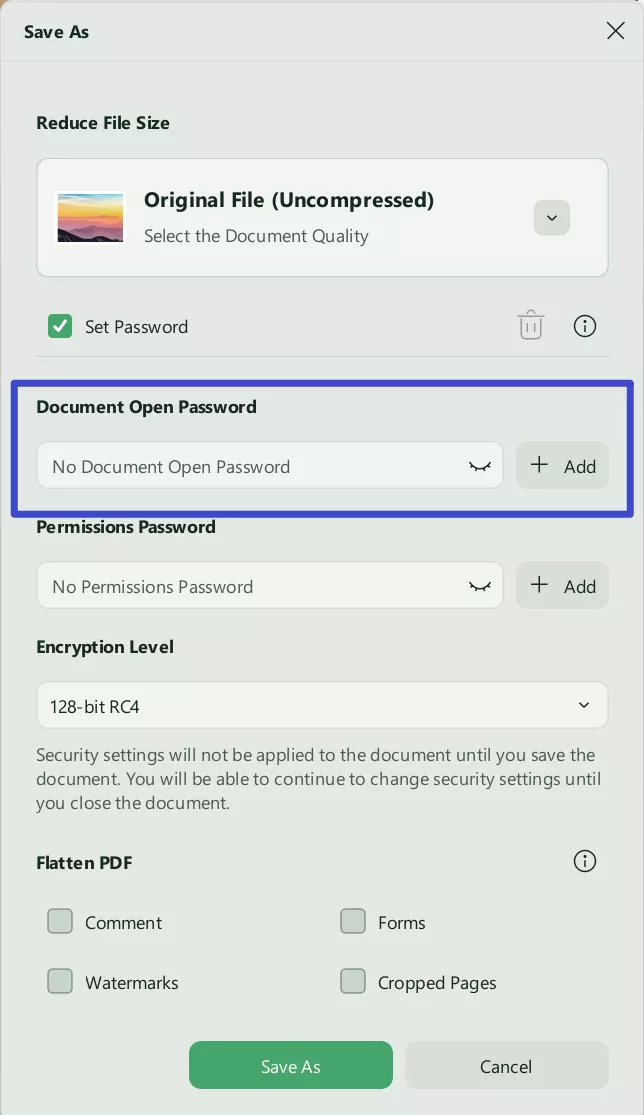
Part 3. How to Password Protect a PDF File Without Acrobat Using Permission Password?
There might be cases where you want the users to access the contents of the PDF file but do not let them edit it. Here, applying the permission password is the most useful option. Using this option in UPDF, users can apply the restrictions to a PDF file. You can set the printing permissions to prevent users from printing the PDF.
However, if needed, you can even allow them to print in low or high resolution. Also, there is an option to allow users to make changes. These may include restricting them to inserting, editing, filling forms, commenting, extracting pages, and various other restrictions. Choose to enable the image, text copying, and setting the encryption level if needed. So, to apply these permissions on UPDF, read the steps provided below:
Step 1: Access the Password Protection Menu in UPDF
Launch the AI-powered UPDF PDF toolkit and access the document for applying the permissions password. Following this, head to the right-side panel, select the "Protect Using Password" feature and press the "Permissions" option.
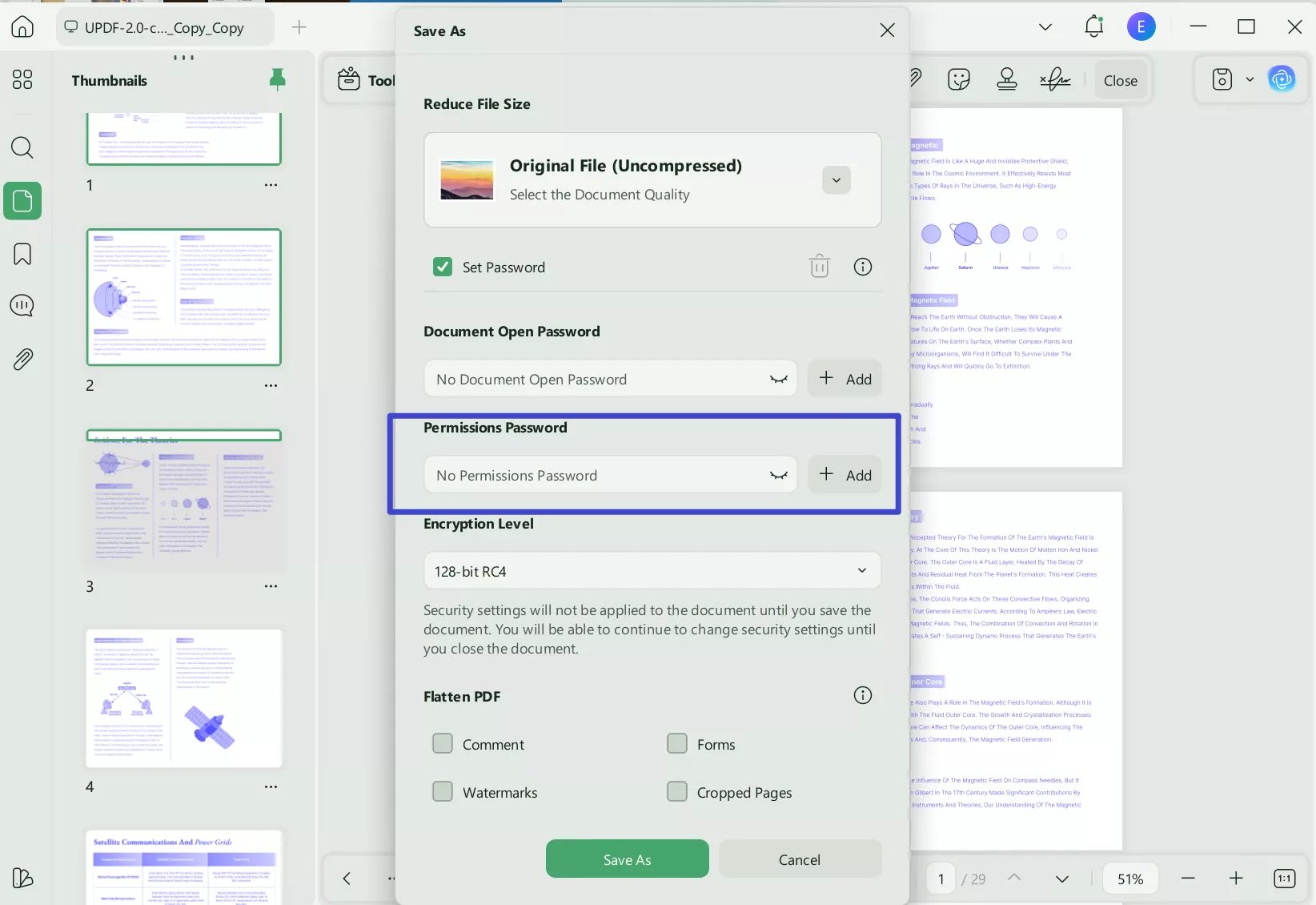
Step 2: Apply the Permission Password with Customized Restrictions
Once you are in the "Permissions" tab, type your permission password and re-type it for confirmation. Then, hit "More Options" to reveal the advanced permission settings. Here, you can customize the restrictions, such as managing the "Printing Allowed," "Changes Allowed," and "Encryption Level" settings. Press the "Apply" button at the bottom and save the file on your system.
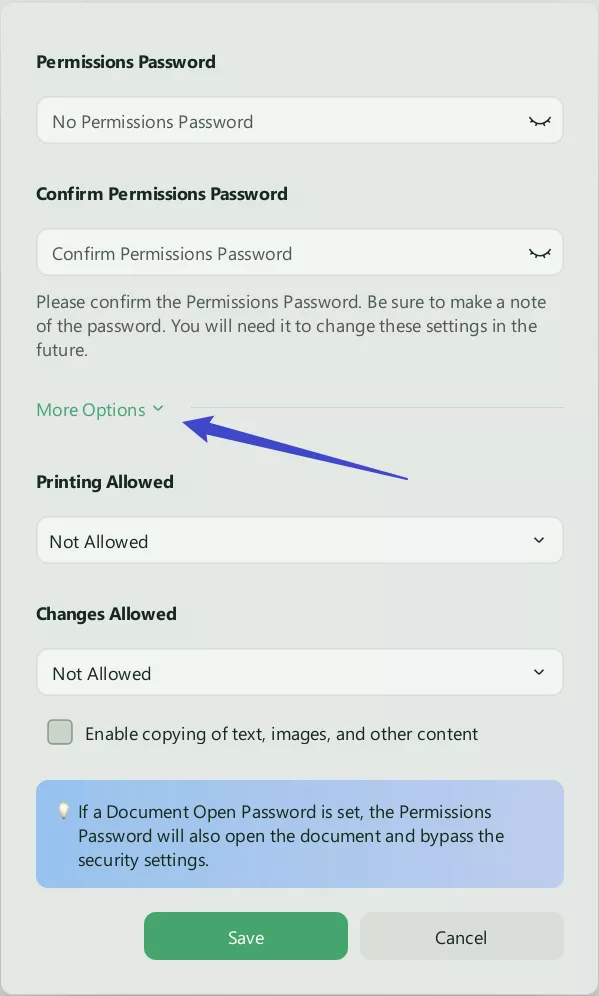
If UPDF is what you need, you can download it via the below button.
Windows • macOS • iOS • Android 100% secure
Watch the guide video below to learn how to protect PDF from data Leak.
Part 4. FAQS About Password Protecting PDF Without Acrobat
Q1. How to password protect PDF with Acrobat?
Open Adobe Acrobat and access the PDF document that needs to be protected. Locate the "All Tools" > "Protect a PDF" feature from the left panel. Select the “Protect with Password” and enable the options of “Viewing” or “Editing” the PDF, if needed. Add the password and hit “Apply” to conclude the process. However, you might have to buy the premium subscription plan for Adobe.
Q2. How to password-protect PDF without Acrobat for free?
For password-protecting a PDF without Acrobat for free, try using MS Word. Right-click the PDF document in the file explorer, navigate to "Open With," and select "Word." On opening, head to "File" > "Save As," and double-click on "This PC." Add the name, and select "PDF" from the "File Type" drop-down. Hit the "Options" button and checkmark the "Encrypt the Document with a Password" box. On clicking "OK," add the password and save the document.
Q3. How to password protect PDF without Acrobat online?
PDF2Go is the best option for password-protecting PDF documents online without Adobe. Access the site and head to the "Protect PDF" page. Click the "Choose File" button for uploading the PDFs. Scroll and add the open or permission password. Enable the "Optional Settings" if needed and click "Start" to execute the process. After the password is added, select "Download" or "Download ZIP File" as required.
Final Words
Now, we know that adding passwords to PDFs is relatively easy and doesn't need complex steps to follow. When using the UPDF PDF editor, your task of adding a password gets much easier. Moreover, to password-protect PDFs without Acrobat, UPDF stands as the best option with advanced permissions features.
In addition, it lets you customize the security settings for your crucial PDF documents to enable any customized restriction for various uses. To use this AI-powered tool's advanced features, download UPDF via the below button for free to ensure your PDF remains safe and secure at any cost.
Windows • macOS • iOS • Android 100% secure
 UPDF
UPDF
 UPDF for Windows
UPDF for Windows UPDF for Mac
UPDF for Mac UPDF for iPhone/iPad
UPDF for iPhone/iPad UPDF for Android
UPDF for Android UPDF AI Online
UPDF AI Online UPDF Sign
UPDF Sign Edit PDF
Edit PDF Annotate PDF
Annotate PDF Create PDF
Create PDF PDF Form
PDF Form Edit links
Edit links Convert PDF
Convert PDF OCR
OCR PDF to Word
PDF to Word PDF to Image
PDF to Image PDF to Excel
PDF to Excel Organize PDF
Organize PDF Merge PDF
Merge PDF Split PDF
Split PDF Crop PDF
Crop PDF Rotate PDF
Rotate PDF Protect PDF
Protect PDF Sign PDF
Sign PDF Redact PDF
Redact PDF Sanitize PDF
Sanitize PDF Remove Security
Remove Security Read PDF
Read PDF UPDF Cloud
UPDF Cloud Compress PDF
Compress PDF Print PDF
Print PDF Batch Process
Batch Process About UPDF AI
About UPDF AI UPDF AI Solutions
UPDF AI Solutions AI User Guide
AI User Guide FAQ about UPDF AI
FAQ about UPDF AI Summarize PDF
Summarize PDF Translate PDF
Translate PDF Chat with PDF
Chat with PDF Chat with AI
Chat with AI Chat with image
Chat with image PDF to Mind Map
PDF to Mind Map Explain PDF
Explain PDF Scholar Research
Scholar Research Paper Search
Paper Search AI Proofreader
AI Proofreader AI Writer
AI Writer AI Homework Helper
AI Homework Helper AI Quiz Generator
AI Quiz Generator AI Math Solver
AI Math Solver PDF to Word
PDF to Word PDF to Excel
PDF to Excel PDF to PowerPoint
PDF to PowerPoint User Guide
User Guide UPDF Tricks
UPDF Tricks FAQs
FAQs UPDF Reviews
UPDF Reviews Download Center
Download Center Blog
Blog Newsroom
Newsroom Tech Spec
Tech Spec Updates
Updates UPDF vs. Adobe Acrobat
UPDF vs. Adobe Acrobat UPDF vs. Foxit
UPDF vs. Foxit UPDF vs. PDF Expert
UPDF vs. PDF Expert

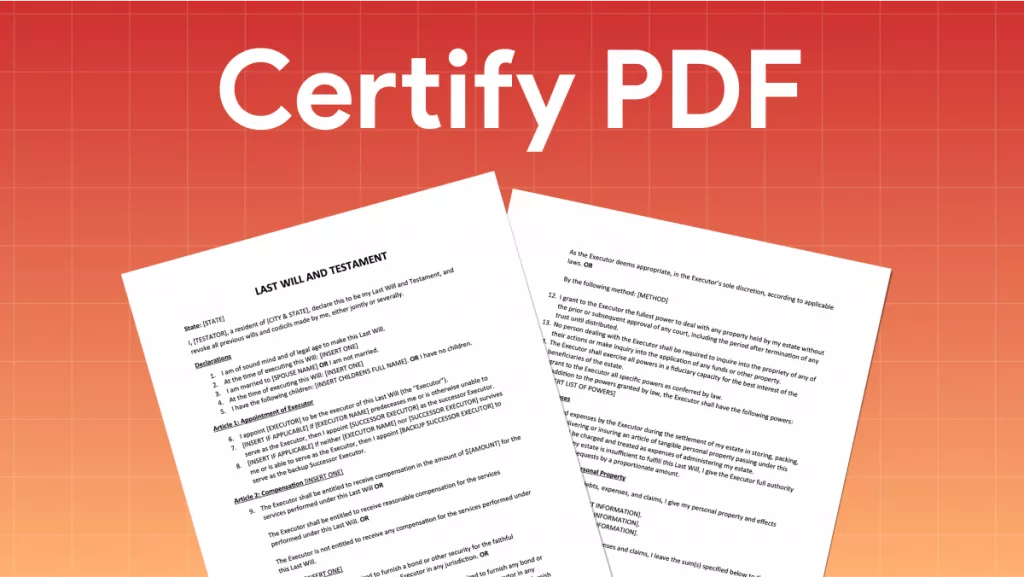
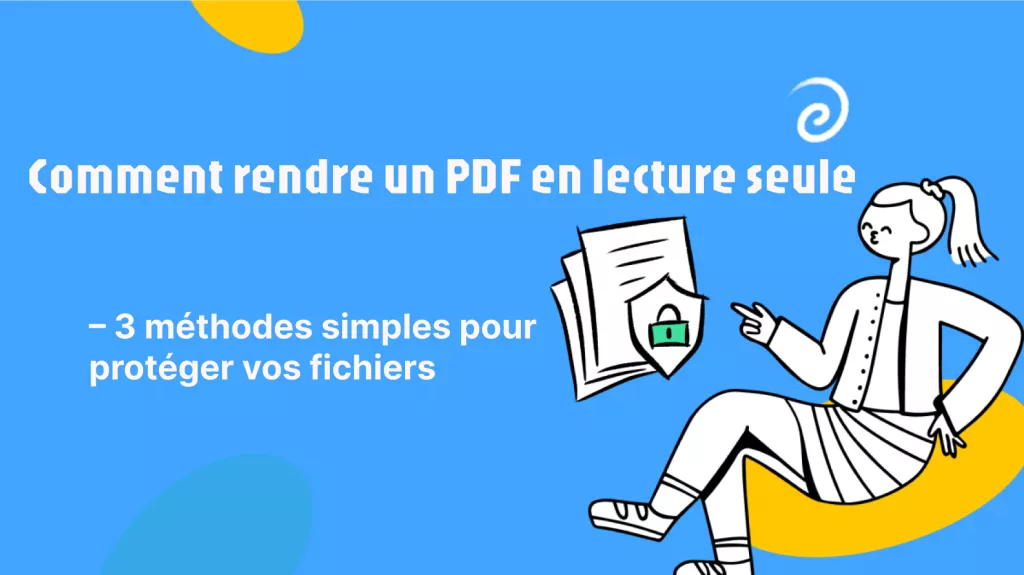
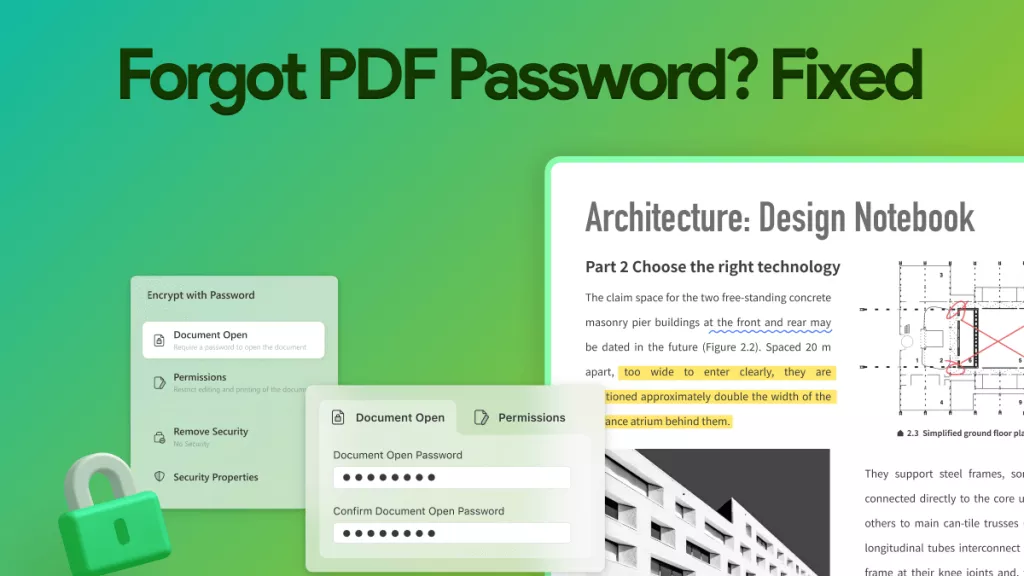
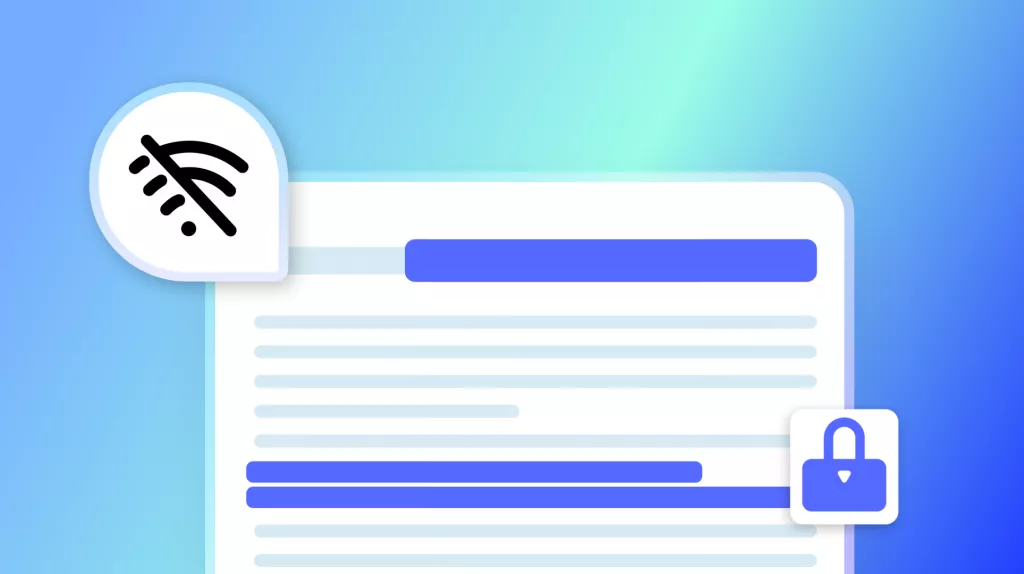
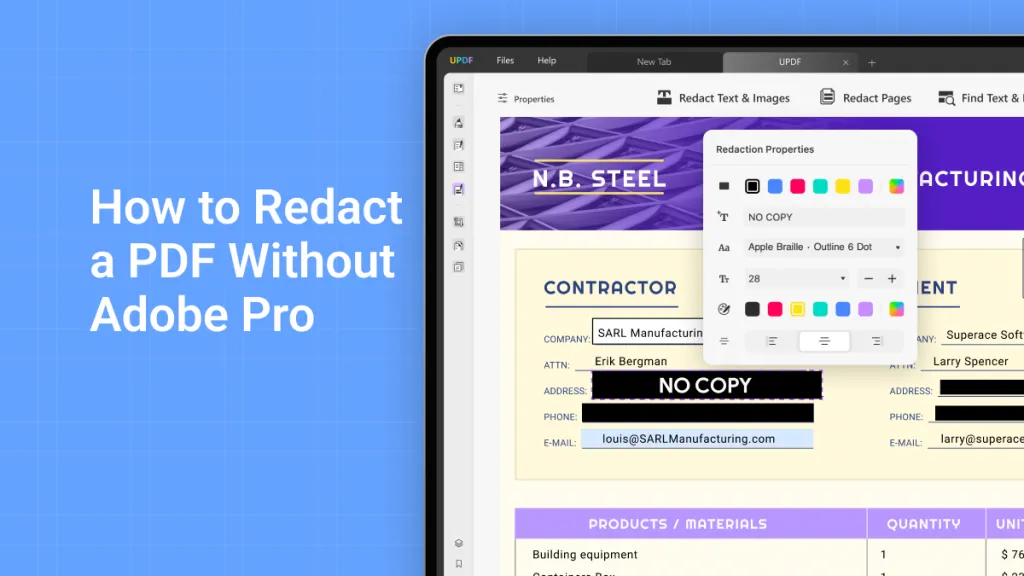
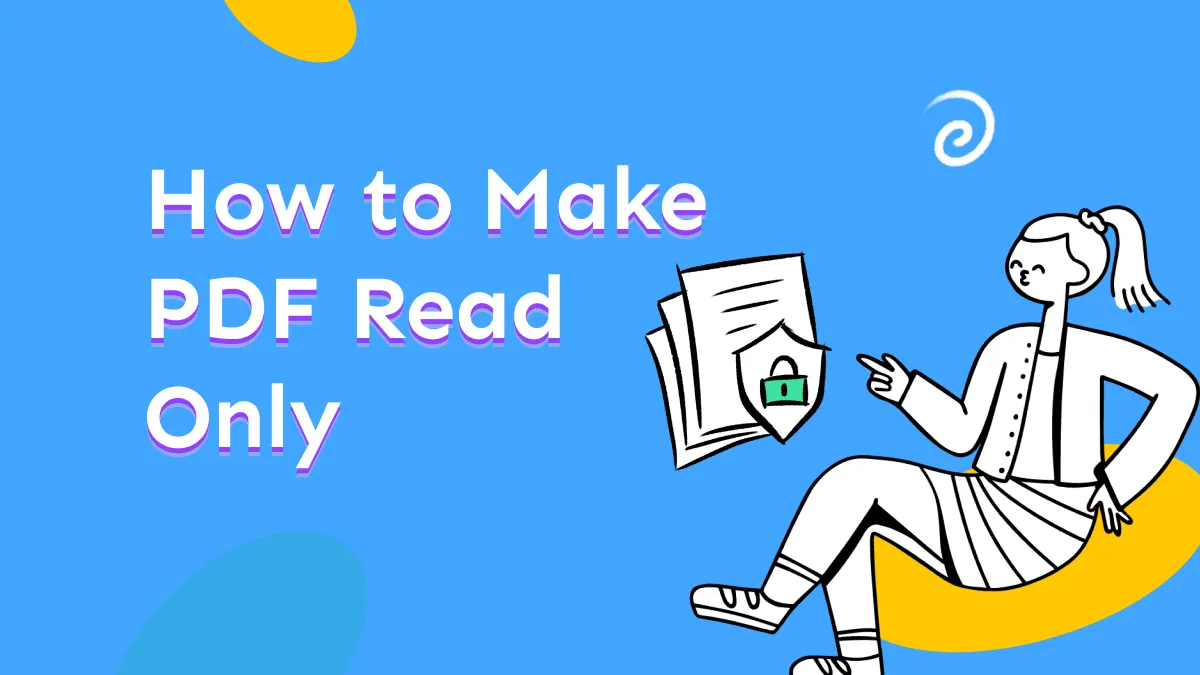
 Enrica Taylor
Enrica Taylor 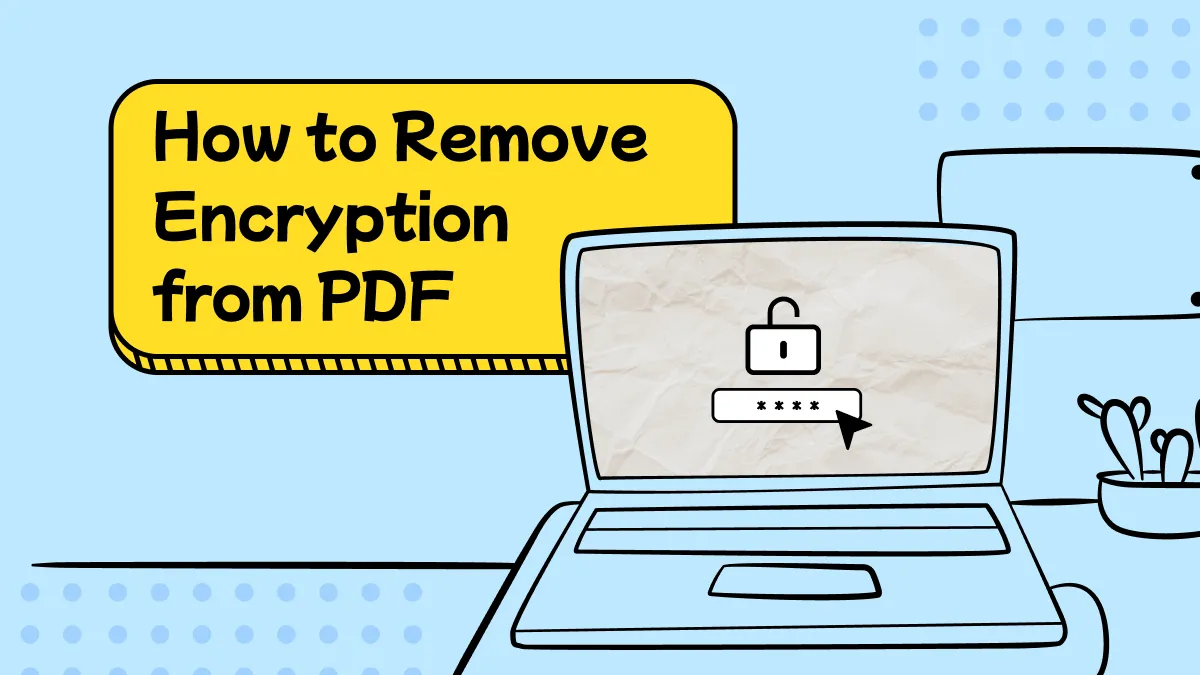

 Enid Brown
Enid Brown 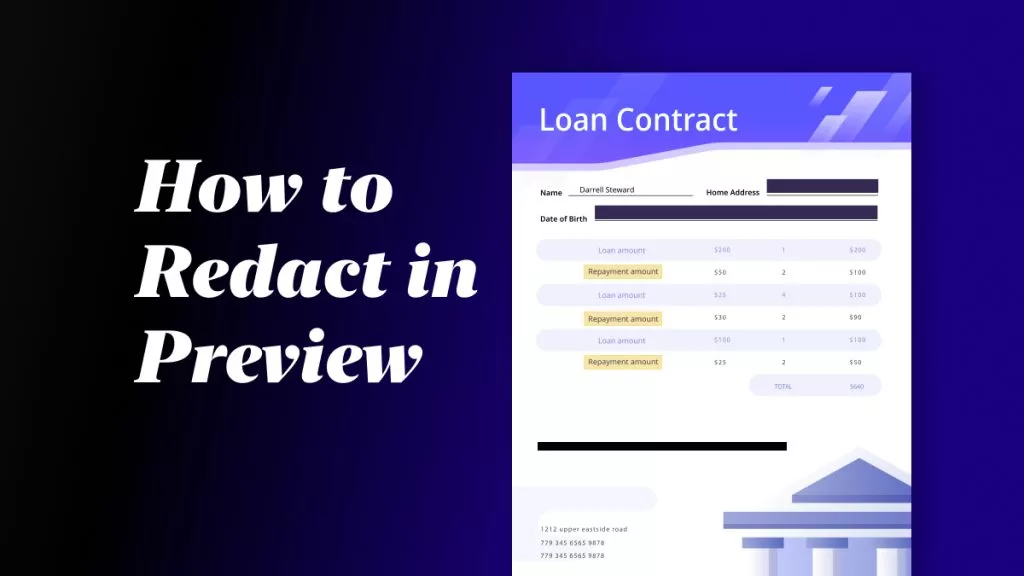
 Lizzy Lozano
Lizzy Lozano